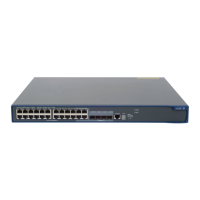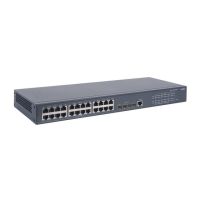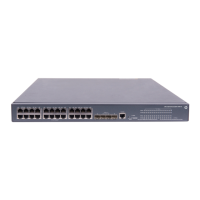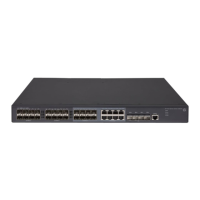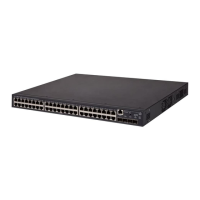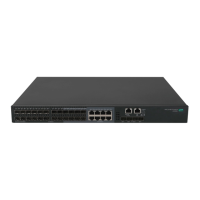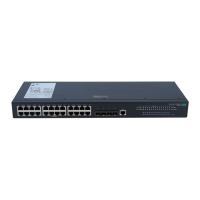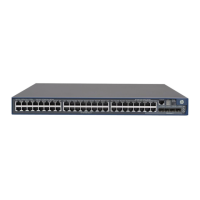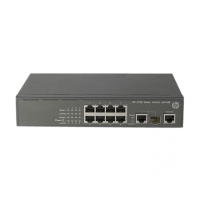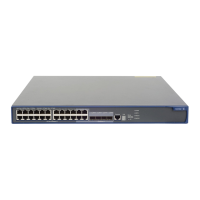119
Port type
Actions (in the inbound direction)
Actions (in the outbound
direction)
Unta
ed frame Ta
ed frame
Access
Tags the frame with the
PVID tag.
• Receives the frame if its
VLAN ID is the same as the
PVID.
• Drops the frame if its VLAN
ID is different from the
PVID.
Removes the VLAN tag and
sends the frame.
Trunk
Checks whether the PVID
is permitted on the port:
• If yes, tags the frame
with the PVID tag.
• If not, drops the
frame.
• Receives the frame if its
VLAN is carried on the
port.
• Drops the frame if its VLAN
is not carried on the port.
• Removes the tag and send
the frame if the frame carries
the PVID tag and the port
belongs to the PVID.
• Sends the frame without
removing the tag if its VLAN
is carried on the port but is
different from the PVID.
Hybrid
Sends the frame if its VLAN is
carried on the port. The frame is
sent with the VLAN tag removed
or intact depending on your
configuration via the port hybrid
vlan command. This is true of the
PVID.
Assigning an access port to a VLAN
You can assign an access port to a VLAN in VLAN view, interface view (including Layer 2 Ethernet
interface view, and Layer 2 aggregate interface view), or port group view.
To assign one or multiple access ports to a VLAN in VLAN view:
Ste
Command
Remarks
1. Enter system view.
system-view N/A
2. Enter VLAN view.
vlan vlan-id
If the specified VLAN does not exist, this
command creates the VLAN first.
3. Assign one or a group of
access ports to the VLAN.
port interface-list By default, all ports belong to VLAN 1.
To assign an access port (in interface view) or multiple access ports (in port group view) to a VLAN:
Ste
Command
Remarks
1. Enter system view.
system-view N/A
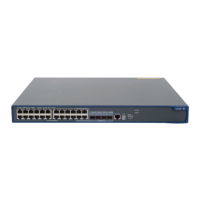
